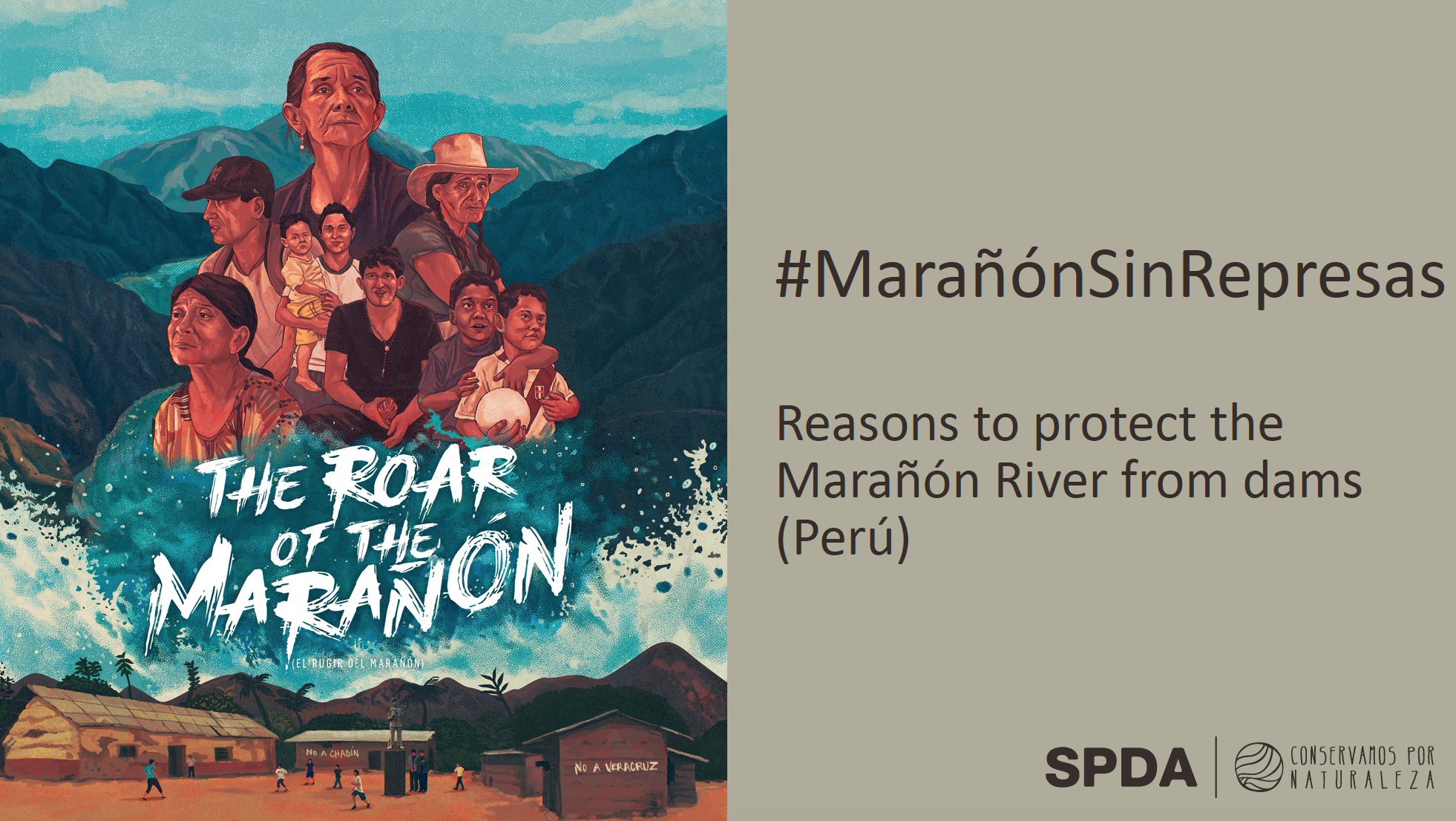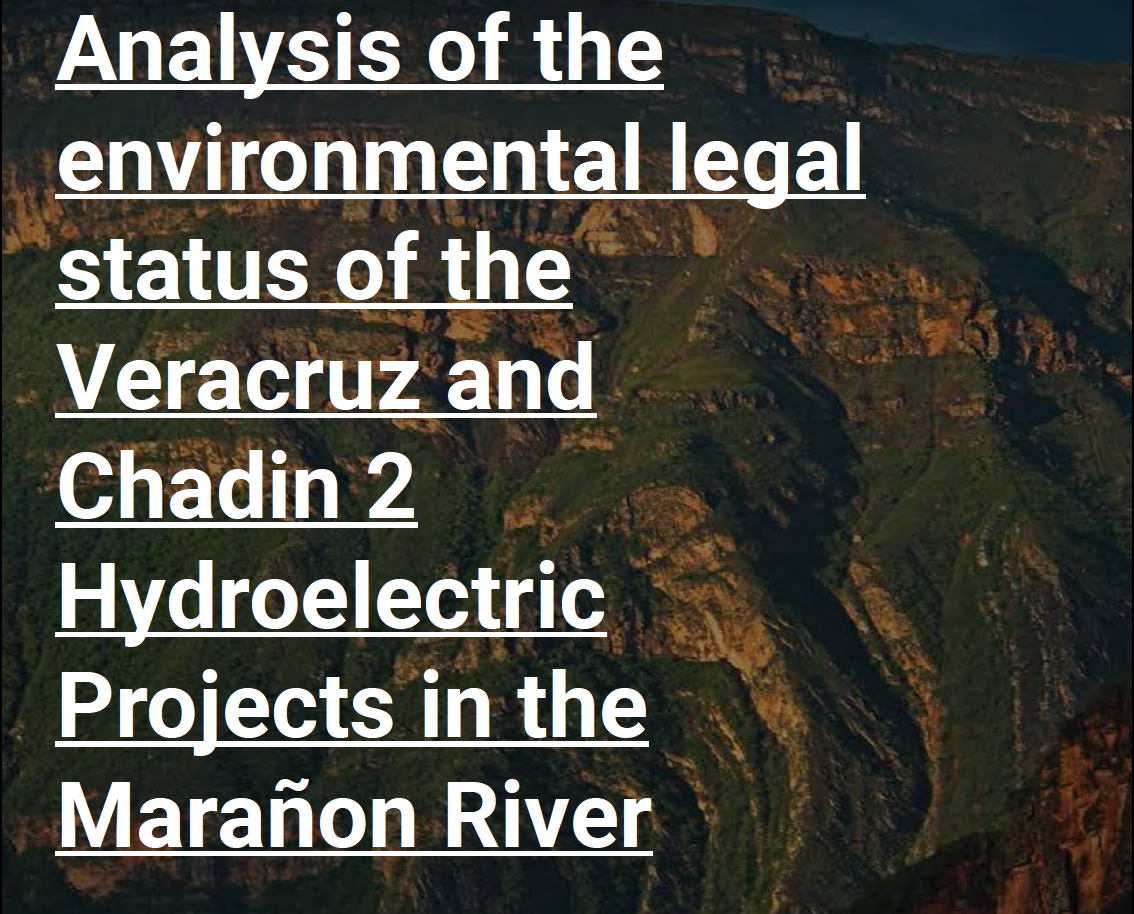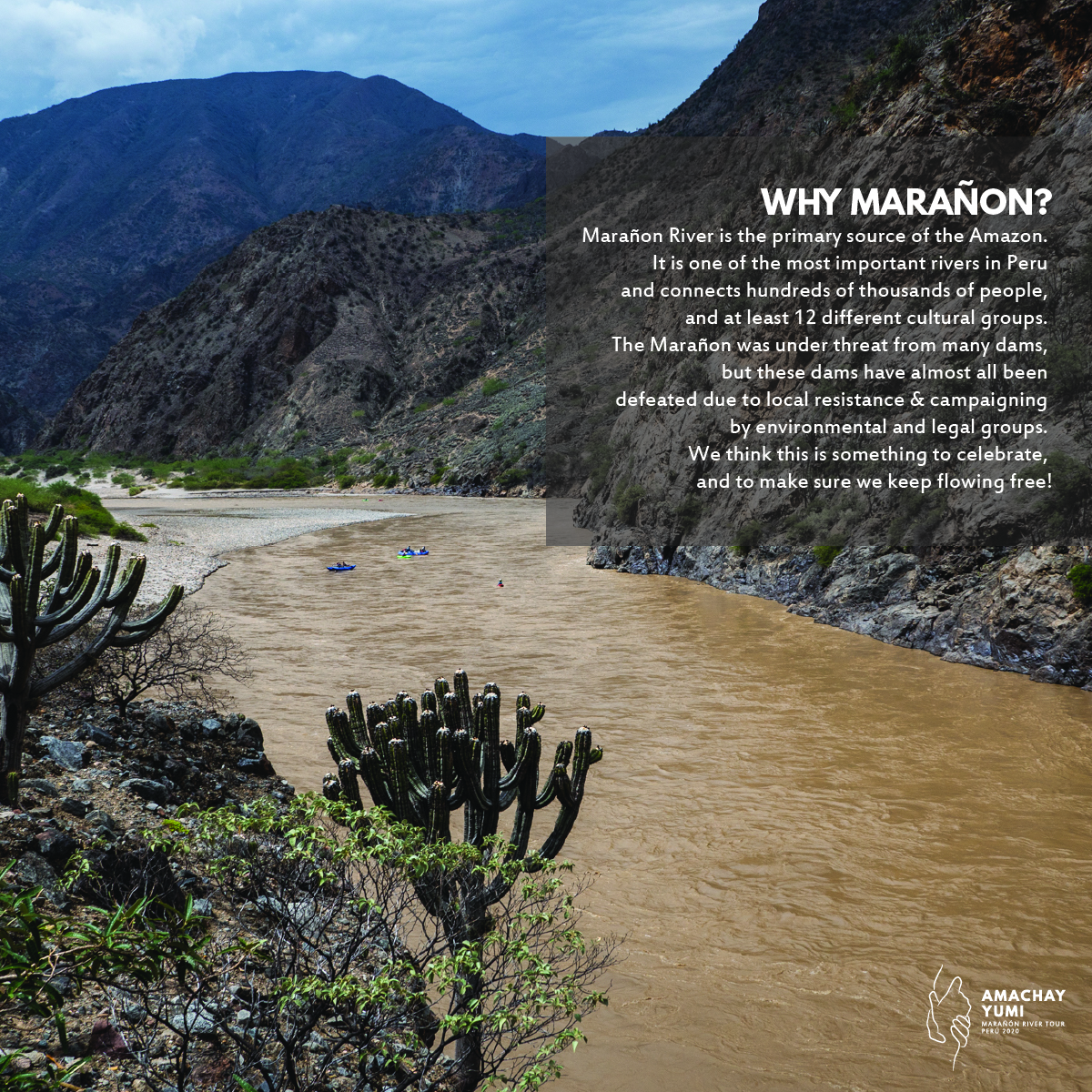September 9, 2021 – Marseille France:
The IUCN World Conservation Congress approved Motion 013 “Protection of Andes-Amazon rivers of Peru: the Marañón, Ucayali, Huallaga and Amazonas, from large-scale infrastructure projects”. We also took this opportunity to make the world premiere for our new film ‘ The Roar of the Marañón.
The Roar of the Marañón will be available online, free for 10 days. We are encouraging everyone to create a premiere in their own home and community, by gathering friends and family to see the film and create a space for dialogue, inspiration and good river vibes!
Press Release:
IUCN World Conservation Congress approves Motion for the protection of Peru’s Amazonian rivers
- The Motion calls for actions to protect the Marañón, Ucayali, Huallaga and Amazon rivers from large infrastructure projects.
- The Motion, drafted by four Peruvian environmental organizations, received the support of the Member’s Assembly of the International Union for Conservation of Nature (IUCN), which represents over 1300 government agencies, civil society groups and indigenous people’s groups from over 160 countries. The IUCN World Conservation Congress is being held this week in Marseille, France.
Lima, September 9, 2021 – The IUCN World Conservation Congress approved Motion 013 “Protection of Andes-Amazon rivers of Peru: the Marañón, Ucayali, Huallaga and Amazonas, from large-scale infrastructure projects”.
Through this motion, the IUCN urges the Peruvian State to protect the Andean-Amazonian rivers, given their key role in the ecological processes of the Amazon basin. The IUCN also commits to assisting the creation of a framework for protecting free-flowing rivers in the Amazon. It further calls for a re-evaluation of projects such as the Amazon Waterway (Hidrovía Amazónica), and for the Peruvian State to cancel the concession contracts for the Chadín 2 and Veracruz megadams in the Marañón canyon, given their non-compliance with contractual obligations and their lack of economic viability.
The motion was presented by the Peruvian organizations Sociedad Peruana de Derecho Ambiental (SPDA), Amazónicos por la Amazonía (AMPA); Derecho, Ambiente y Recursos Naturales (DAR), the Instituto de Montaña-Asociación Instituto Andino de Montaña and the Centro de Conservación, Investigación y Manejo de Áreas Naturales (CIMA) – Cordillera Azul, with the support of the Coordinadora de Organizaciones Indígenas de la Cuenca Amazónica (Ecuador), The WILD Foundation (USA), Bank Information Center (USA) and Wetlands International (The Netherlands).
Marañón megadams
In 2011, the Peruvian government prioritized the construction of hydroelectric dams on the Marañón River. Projects such as Chadín 2 and Veracruz, planned in the Marañón canyon, were approved. At the time, several environmental and social organizations warned of the serious negative consequences of these projects.
“Between 2011 and today, the situation has changed radically. Hydroelectric power plants with dams are no longer a viable option, not only because of the irreparable social and environmental impacts they would cause, but also because in Peru, there are more sustainable and low-cost alternatives for electricity generation. The company Enel, which owns the Veracruz project, has asked the Peruvian government to terminate its contract,” says Bruno Monteferri, director of Conservamos por Naturaleza of the Peruvian Society of Environmental Law (SPDA), and co-director of the documentary The Roar of the Marañón, which tells the complex story of the river and the megadams and premiers Sept. 9th.
According to studies and analyses, these projects would flood the homes of more than a thousand people, affect native communities, unique ecosystems and species of flora and fauna that are only found in this part of the country, in the Seasonally Dry Forests of the Marañón, between the Cajamarca and Amazonas regions.
According to Monteferri:
“The companies Odebrecht and Enel, who own these projects, have not started construction and have therefore failed to comply with their contractual obligations to date. Today, Peru has the opportunity to rethink the future of the Marañón canyon, but there is still no clarity on what the government will do in the medium-term, nor on how it will decide on Enel’s request to terminate the Veracruz project contract. The negative impacts that the mega-dams would generate are greater than the possible benefits. And the risks are extremely high because Peru does not require a comprehensive assessment of the sediments transported by the rivers and how these projects would affect the river downstream”.
Therefore, IUCN Motion 013 adds an important contribution to the organizations that are already working for the protection of the river, as it urges that they “strengthen their safeguards for infrastructure projects that affect the biodiversity of Amazonian rivers, including the need to require their clients to conduct rigorous studies, based on scientific and local knowledge, about the conditions of these rivers in order to understand their complexity and their relationship with the forests, land and ecosystems of the region”.
More information at: www.conservamos.org/rioslibres
Contact: Bruno Monteferri, bmonteferri@spda.org.pe










Leave a Reply